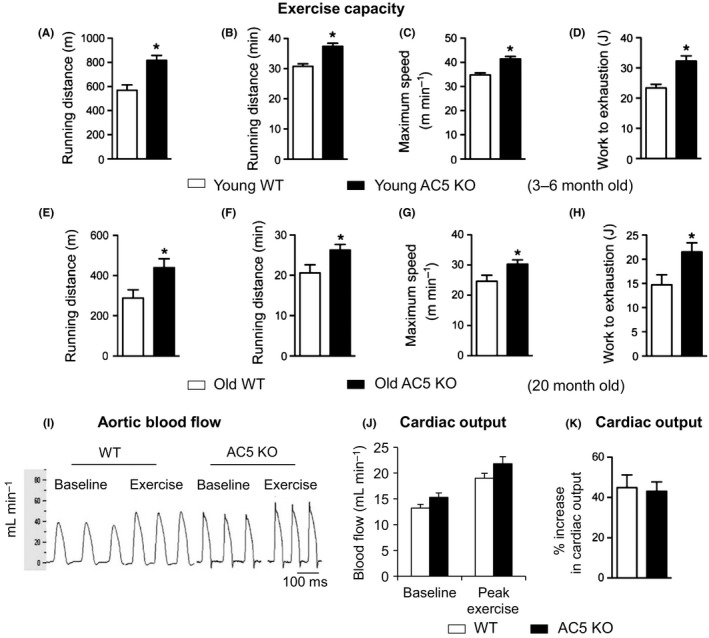Figure 1.

Exercise capacity is enhanced in young and old AC5 systemic KO mice and enhanced exercise capacity in AC5 KO mice is not due to improved cardiac function but rather due to improved muscle function. Exercise capacity is enhanced in young (A–D) (n = 11; 3–6 months old) and old (E–H) (n = 8; 20 months old) AC5 KO mice, as reflected by running longer distances, over shorter time, achieving higher speed, and doing more work. *P < 0.01 vs. WT. Although body weights tended to be less in AC5 KO, there was no relationship between body weight and exercise capacity in this study between the groups, with further support by the differences in work, which takes into account body weight. (I) A representative recording is shown for stroke volume and cardiac output in chronically instrumented, conscious mice, using an implanted transonic flow probe on the ascending aorta. AC5 KO and WT increased stroke volume and cardiac output similarly. (J) Blood flow values, shown in mL min−1, were similar in AC5 WT and AC5 KO both at baseline and peak exercise. (K) % increase in cardiac output in response to exercise was similar in WT and AC5 KO mice (n = 7–8). AC, adenylyl cyclase; KO, knock out.
